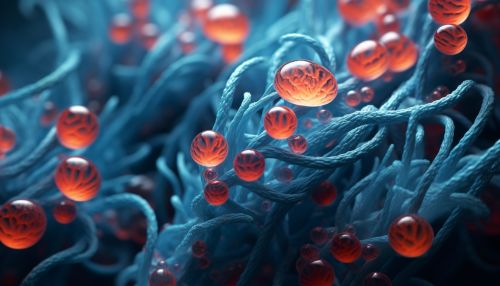Genetic recombination
Introduction
Genetic recombination is a fundamental process that occurs in the DNA during meiosis, contributing to genetic diversity in offspring. This process involves the exchange of genetic material between different molecules of DNA, typically between homologous chromosomes. The result is a new combination of genes, which can lead to variations in traits that are passed on to subsequent generations read more.
Mechanism of Genetic Recombination
The mechanism of genetic recombination involves several steps, starting with the pairing of homologous chromosomes during prophase I of meiosis. This is followed by the formation of a protein structure known as the synaptonemal complex, which holds the chromosomes together and facilitates the exchange of genetic material. The actual exchange of genetic material occurs through a process known as crossing over, where segments of DNA are swapped between chromosomes read more.


Types of Genetic Recombination
There are several types of genetic recombination, including homologous recombination, site-specific recombination, and replicative recombination. Each type involves different mechanisms and can occur under different circumstances.
Homologous Recombination
Homologous recombination is the most common type of genetic recombination, occurring during meiosis. It involves the exchange of genetic material between homologous chromosomes, leading to genetic diversity in the offspring read more.
Site-Specific Recombination
Site-specific recombination involves the exchange of genetic material at specific sites on the DNA molecule. This type of recombination is often used by cells to integrate foreign DNA, such as in the case of viral integration into a host genome read more.
Replicative Recombination
Replicative recombination involves the replication of DNA followed by the exchange of genetic material. This type of recombination is often associated with the repair of damaged DNA read more.
Role in Genetic Diversity
Genetic recombination plays a crucial role in promoting genetic diversity, which is essential for the survival and evolution of species. By creating new combinations of genes, recombination allows for the possibility of new traits that can enhance an organism's ability to adapt to changing environments read more.
Role in DNA Repair
In addition to promoting genetic diversity, genetic recombination also plays a role in the repair of damaged DNA. This is particularly important in the case of double-strand breaks, which can be lethal to the cell if not repaired. The process of homologous recombination can repair these breaks by using a sister chromatid as a template for repair read more.
Genetic Recombination in Bacteria
Genetic recombination also occurs in bacteria, where it plays a role in both genetic diversity and DNA repair. In bacteria, recombination can occur through three main mechanisms: transformation, conjugation, and transduction read more.
Conclusion
In conclusion, genetic recombination is a fundamental process that contributes to genetic diversity and DNA repair. Understanding this process is crucial for understanding the mechanisms of evolution and the maintenance of genome integrity.
